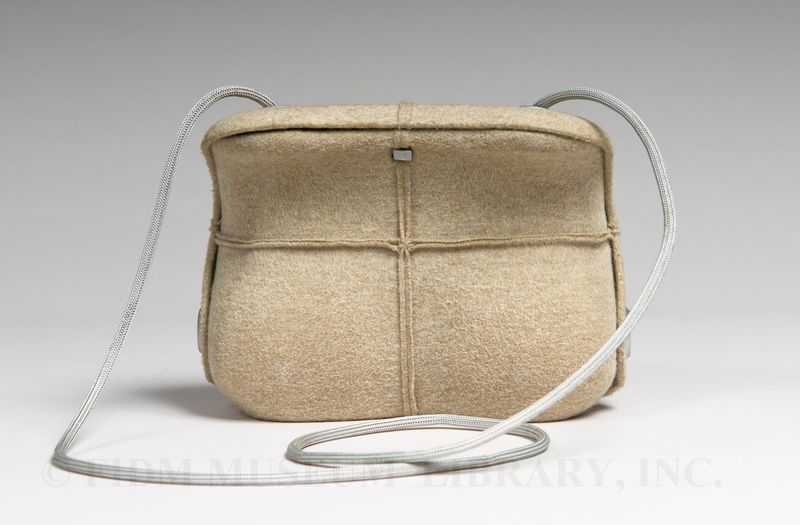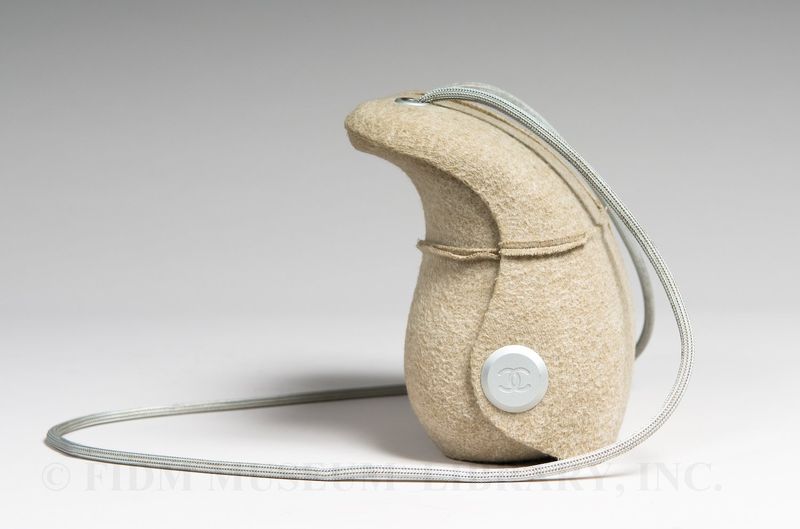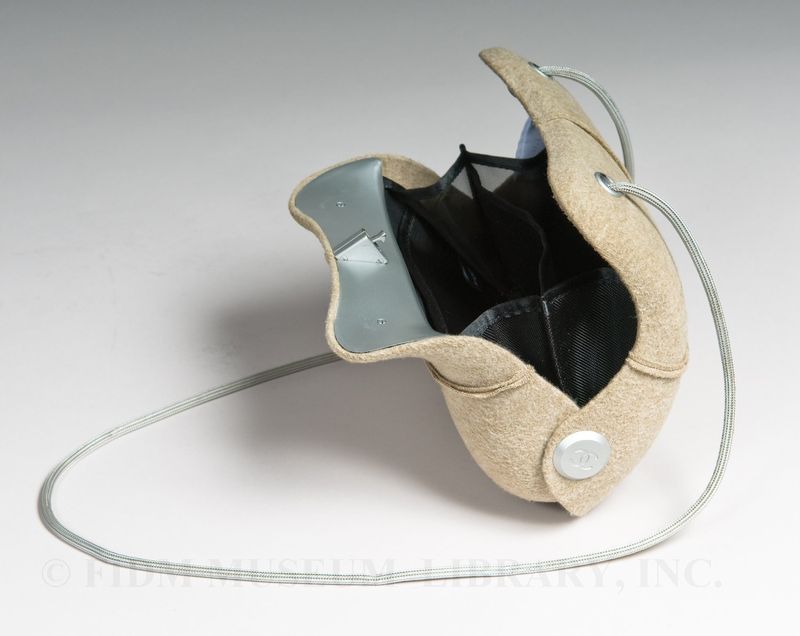Do you want IT?
In 1998, Chanel launched an understated new handbag. Based on the upside-down torso of a woman, this aerodynamic bag was called 2005. The sleek, lightweight 2005 bag was created to carry the venerable design house into the new century. Prior to the 2005 bag, Chanel had primarily produced quilted leather handbags in a variety of sizes, always slung over the shoulder with the classic gold chain. The 2005 was a departure, consisting of a solid plastic understructure covered with neutral flannel and carried by an understated silver metal mesh chain. During the design phase, 2005 prototypes were carefully guarded to prevent counterfeiting. Chanel's designer Karl Lagerfeld said of the 2005, "It's totally new age...I have never seen anything like it."1
 2005 Bag Chanel 1998 Gift of Barbara Bundy 2002.37.1
2005 Bag Chanel 1998 Gift of Barbara Bundy 2002.37.1
Chanel's 2005 bag exists as part of a larger phenomenon: the It Bag. During the 1990s and into the early 2000s, handbags were the consummate symbol of both fashion knowledge and a certain insider status. Shoes had previously filled this role and many fashion writers noted that women were dressing around their handbags, which had replaced shoes as the most crucial fashion accessory. Designers fanned the interest in handbags by producing limited edition styles or colors which often necessitated a waitlist or by releasing certain bags in only 1 or 2 locations. Particularly notable for their long waitlists are the Kelly and Birkin bags made by Hermes. Even during the current recession, appetites for handbags remain high, as demonstrated by this recent article on Hermes.
Some fashion scholars have suggested that the handbag craze originated with the relatively austere and monochromatic fashions of the mid-to-late 1990s. Handbags offered a pop of style and a way to indicate personal taste when worn with an otherwise sedate outfit. Purchasing a designer handbag was also a relatively inexpensive way to attain a portion of the cachet associated with owning a designer item. More than other clothing items, handbags were thought to reveal something essential about their owner. In the words of writer Daphne Merkin, "they [bags] tell us nothing less than where we live, who we are and where you might metaphorically find us, carrying our best selves in the bag of our dreams."2 Fashion coverage from the late 1990s is rife with anecdotes about women so afraid of making the wrong personal statement with a handbag that they use none at all. Or, conversely, a woman would purchase an entire wardrobe of handbags to suit her every mood. Now that the handbag craze has diminished, Merkin's sentiment might seem a bit overblown. It does, however, touch on one of the central issues of interest to fashion scholars: how individuals construct personal identity through dress. Though dress is but one aspect of personal identity, it is certainly the most visible aspect of this identity. For a time, It Bags were at the crux of fashion and thus identity. What's next...will we go back to shoes? Or have we entered a more modest era, when status symbols are not defined by their rarity or expense? Let us know what you think!
1 Blanchard, Tamsin. "Aerodynamic Handbag Launches Chanel into Next Millennium" The Independent 14 Mar. 1998. http://www.independent.co.uk/news/aerodynamic-handbag-launches-chanel-into-next-millennium-1150088.html 7 Oct. 2009. 2 Merkin, Daphne. "Sometimes a Bag is Not Just a Bag" The New York Times 26 Feb. 2006.: F154.

